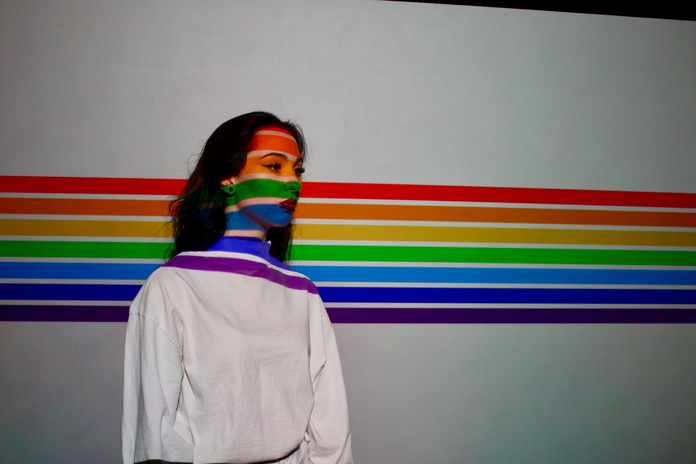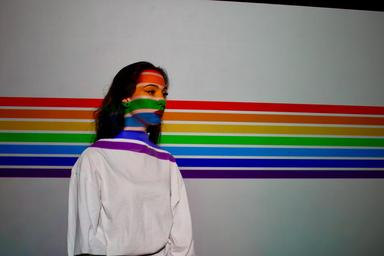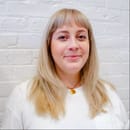Growing up, I struggled to find one label to describe who I was and who I liked. As time went on, I thought that I would be okay with not finding the “right label,” and would be happy simply going with the flow of things. I thought I didn’t have to explain myself to anyone, as long as I felt comfortable with myself.
Finding my own identity
Once I started college, I began to put myself out there and experience new things. I still felt like I was different, but I wasn’t comfortable talking about it with anyone yet. I attempted to figure it out on my own by reading, researching, watching videos, and joining LGBTQ groups on social media. During this time, I met a lot of individuals who identified as queer, and I was able to learn about myself through their stories. They were very open and understanding, so I was able to open up and share my own perspectives for the first time.
It wasn’t until the summer of 2019 that I finally started to think more about how I identified. For years I stood by the decision to not label myself, because I was living my best life and was comfortable with my choices. Too, I thought that I was never going to really talk about my preferences with anyone. Finding one single term felt like I was doing it just so I could explain myself to someone else.
However, I started feeling empty, like missing that terminology took away from knowing myself fully. I started to research more in an attempt to finally pin down what and who I liked or was attracted to.
I had just happened to join a research team at my university that focused on studying the experiences of individuals who identified as nonbinary. This was purely coincidental and had nothing to do with me wanting to find a category that I fit into. I joined the team identifying as a cisgender female. I did not want to share my own suspected preferences with anyone because I wasn’t ready, and I myself did not even fully understand the situation yet. But being involved with a research team that focused on LGBTQ individuals helped me learn about different terms and ways to bucket experiences. It helped me relate to others, and I realized that I was going to be okay.
I was eventually able to come to a conclusion on how I wanted to identify. I always knew that I had no sexual attraction towards anyone, and anything sex-related did not capture my attention in a way that made me want to try it out. Sex was not taboo to me or something that I felt ignorant of—I just didn’t want it to be a huge part of my life. That’s when I realized that I was asexual.
After coming to this conclusion, I started joining more online communities for asexual individuals and got advice on how to navigate this new phase of life with my label. I started dating too, and I realized that I was open to having romantic relationships with any and all individuals, regardless of how they identified sexually or by gender. Then, I realized that this meant that I was technically not straight, and not just asexual. As I read more and talked to queer friends, I found that “panromantic” was actually a better label for me. It means that I am open to having romantic relationships with all genders and sexual orientations, but I am not sexually attracted to anyone.
I decided to open up to a few friends and come out about my identity. The result was as expected—some friends disregarded me, others thought I was joking, and others offered to prove me wrong and help “change me” because they did not believe that I could be asexual. I recall two friends that actually seemed accepting, even though they lacked knowledge on what the details meant. I did my part in sharing who I am. There are always going to be accepting people, and then those who remain narrow minded. But that’s not my problem, as long as I am happy and fulfilled with myself.

What Pride 2020 means to me
Having recently found new ways to articulate my identity, I was finally going to attend Pride and a local parade with individuals who accept me and can relate to my story. This was going to be my first Pride—and it felt like such an appropriate time to celebrate. I planned to go all out with my friends and felt excited to see more of the community in my city.
The pandemic hitting and leading to the cancellation of events was disappointing, but I am going to carry on by sharing this new, unearthed part of myself in conversation with those I care about. I’ll also be attending virtual events and reaching out to other groups who need extra visibility and support right now.
“I’m bisexual, and I have known this for a long time but have been closeted for years. I was excited to celebrate my first Pride and be my full self in public” says Chayo Urrea, a college junior, who was also looking forward to Pride this year. She notes that she is going to make the most out of this month by coming out to her mother, and honoring Pride’s impact.
Chayo states: “It’s important not to lose sight of yourself, and to keep feeling connected to people in all of this. If there is anything this community excels in, it’s connection, even if it is only through a screen.” Chayo has high hopes and plans to celebrate this upcoming Pride season, and so do I. I hope to join her and others in commemorating our history and supporting one another, because we are all going through this together.



